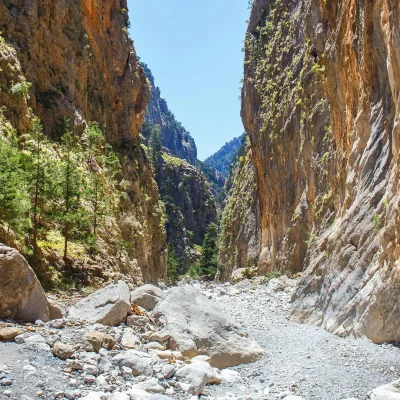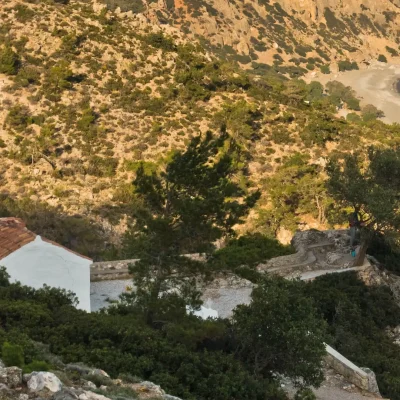History of
Sougia
Tucked away on Crete’s tranquil southern coast, Sougia stands as a village with deep historical roots. While it now offers peaceful coastal allure, the village’s past weaves a vibrant story of civilizations, commerce, and cultural melding.
Starting with its Ancient Beginnings: Originally known as “Syia,” Sougia was a pivotal harbor for the neighboring city of Elyros in ancient times. The preserved Roman temple, dedicated to the goddess Artemis, acts as a silent reminder of these early days.
Moving to the Byzantine Era: The village blossomed during the Byzantine age, housing a majestic Christian basilica. It was during these times that the village transitioned to its current name, Sougia. To this day, Byzantine-era relics and edifices still pepper the landscape.
Transitioning to the Venetian Influence: Sougia’s landscape changed with the Venetians’ arrival, who erected castles as a defense against pirates. The Castel di Sfacia and the remnants of Agios Nikolaos Castle stand as echoes of this influential period.
Then came the Ottoman Rule: Under the Ottomans, Sougia’s importance didn’t wane. Instead, it thrived as a vibrant port and agricultural nucleus. The architecture, with hints of Ottoman design, and the repurposed Venetian fortresses, attest to this epoch.
Fast forwarding to Modern Tranquility: Sougia has gracefully morphed into a tranquil coastal hamlet. It melds its historical essence with the calm of the present, boasting a spotless beach, ancient relics, and proximity to natural marvels like the Samaria Gorge. It’s a sought-after haven for many.
A leisurely walk through its lanes offers a blend of its multifaceted history and today’s comforts. Sougia’s chronicles speak of tenacity and evolution, positioning it as both a relaxing getaway and a gateway to Crete’s abundant legacy. So, when you visit Sougia, you’ll find yourself wrapped in today’s peace while journeying through its rich yesterdays.


